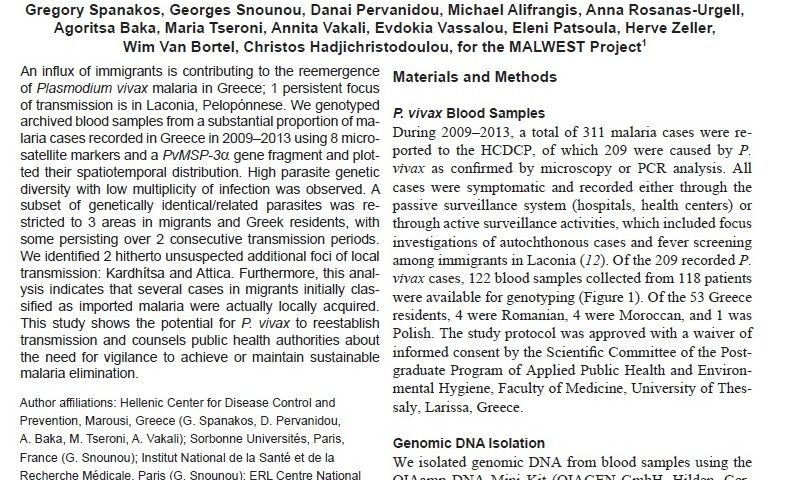Authors: Gregory Spanakos, Georges Snounou, Danai Pervanidou, Michael Alifrangis, Anna Rosanas-Urgell, Agoritsa Baka, Maria Tseroni, Annita Vakali, Evdokia Vassalou, Eleni Patsoula, Herve Zeller,
Wim Van Bortel, Christos Hadjichristodoulou, for the MALWEST Project1
Genetic Spatiotemporal Anatomu of Plasmodium vivax Malaria Episodes in Greece, 2009-2013
An influx of immigrants is contributing to the reemergence of Plasmodium vivax malaria in Greece; 1 persistent focus of transmission is in Laconia, Pelopónnese. We genotyped archived blood samples from a substantial proportion of malaria cases recorded in Greece in 2009–2013 using 8 microsatellite markers and a PvMSP-3α gene fragment and plotted their spatiotemporal distribution. High parasite genetic diversity with low multiplicity of infection was observed. A subset of genetically identical/related parasites was restricted to 3 areas in migrants and Greek residents, with some persisting over 2 consecutive transmission periods. We identified 2 hitherto unsuspected additional foci of local transmission: Kardhítsa and Attica. Furthermore, this analysis indicates that several cases in migrants initially classified as imported malaria were actually locally acquired. This study shows the potential for P. vivax to reestablish transmission and counsels public health authorities about the need for vigilance to achieve or maintain sustainable malaria elimination.

